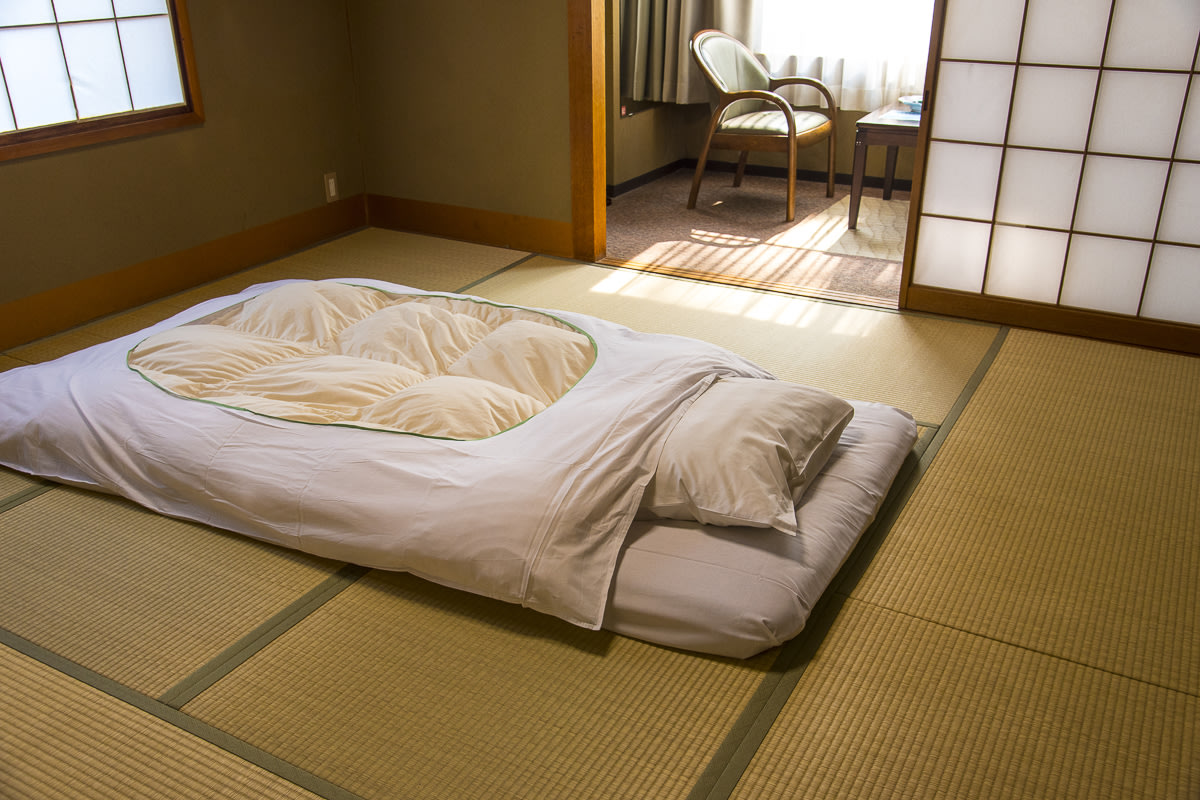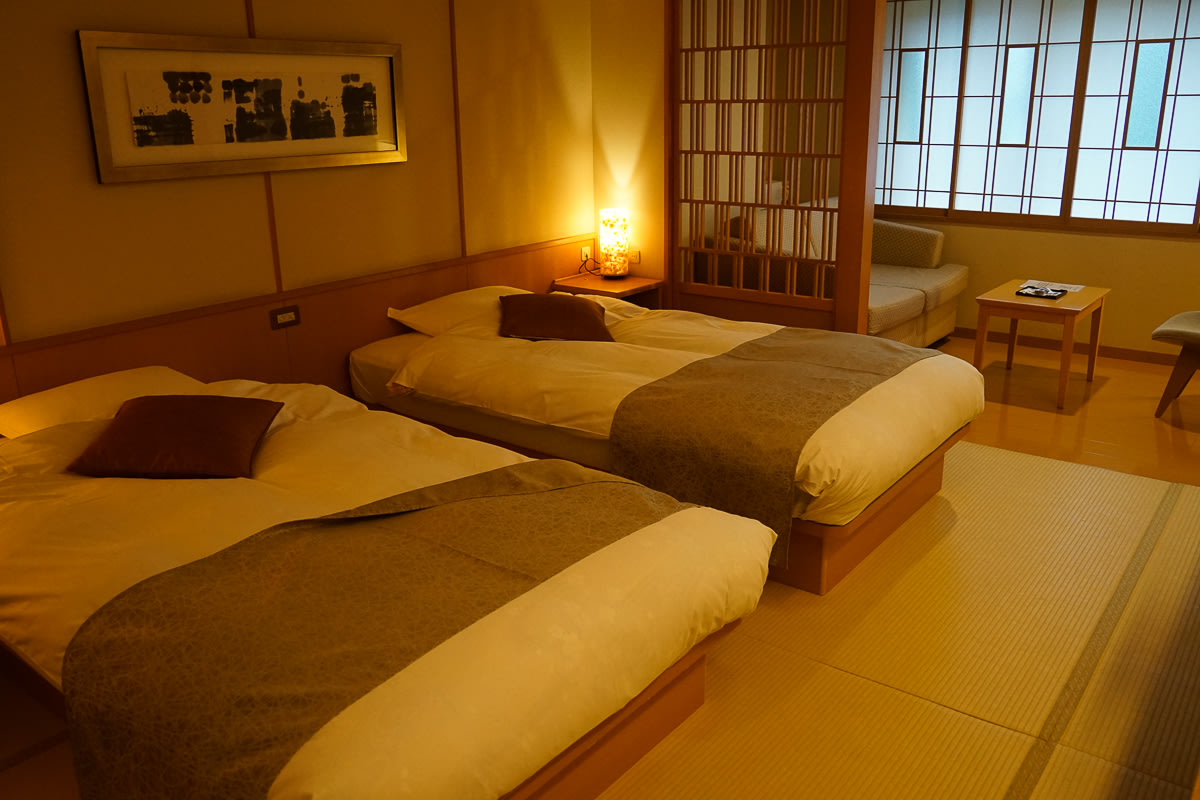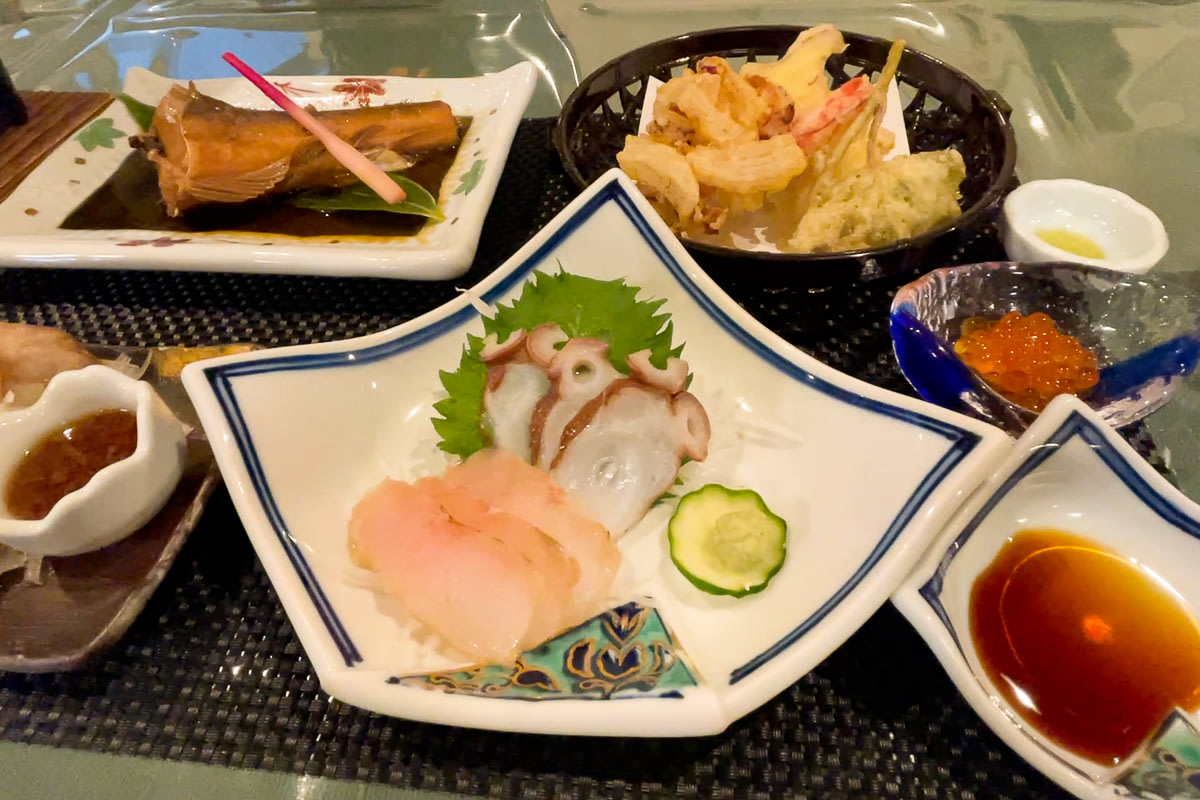A Local's Guide on What to Expect When Staying in Hokkaido
, by Zac
Staying in Hokkaido is all part of the adventure, but if you've never experienced a Japanese-style stay before, you may be worried about making cultural faux-pas… or wondering what on earth all those buttons on the toilet do! We’ve got you covered - Zac's here with our local’s guide on what to expect when staying in Hokkaido.

Ask anyone who’s taken a trip to Japan about the places they’ve stayed and they’ll no doubt have at least one anecdote to tell you. Whether it was roughing out a night in a crowded capsule hotel, trying to figure out how to set up a futon in a seaside inn or opening the bathroom door to find the shower to be non-existent, Japanese accommodations are known for their quirks and Hokkaido’s are no exception. In this blog, I will touch upon many of the questions we get asked by guests on our tours as well as answer the questions you may not have even known you had about staying in Hokkaido.
Where do my shoes go?

We'll start with the question we get asked the most, first!
While in many countries the question of when and where to slip off your shoes is up to personal preference, in Japan there is always a specific spot to take them off. The problem with said spot is that it changes from place to place! While many hotels or larger lodgings will have you take off your shoes as you enter guest rooms, some accommodations, particularly ryokan (Japanese inns) and minshuku (guest houses), will ask you to remove them as soon as you enter the building. A good rule of thumb is to look for a single step up, some slippers, a cubby for shoes and, 99% of the time, a shoe-horn! These are pretty consistent cues to take your shoes off at the entrance.
If you don’t see any of that upon entering your accommodation, it’s safe to assume you’ll be taking your shoes off in your room. If that’s the case, you’ll typically find a similar space with a step up as soon as you enter your room. If there is no step up, sometimes the ‘shoe area’ is inferred by different colored flooring, and in the case of some business hotels sometimes there doesn’t seem to be one at all! Slippers are provided for you to use when walking around the accommodation or your room but you aren’t obligated to wear them. Having stayed in hundreds of hotels and inns in the decade since I first came to Japan, I can count the times my feet have fit into hotel slippers on a single hand! Some hotels have larger slippers, so it never hurts to ask if the ones in your room don’t fit.
The one place you will always want to wear slippers is the bathroom! In most accommodations with a shared bathroom, you’ll find slippers lined up as soon as you enter the room. Be sure to switch out your room slippers for these “toilet slippers” - and be sure to switch back to your room slippers when you leave! Almost everyone has forgotten and ended up wandering around their hotel in toilet slippers - it's like a rite of passage traveling in Japan! But if you do notice yourself wearing toilet slippers, don’t fret too much and just change back to regular slippers when you have the chance. It happens on all of our tours, and even happens to us guides every once in a while!
Why is the room so hot?!
Once your shoes are off and your bags unpacked, you’ll probably find yourself asking ‘Why is it so hot (or cold) in here?!’ A good majority of Japanese accommodations run on centrally-controlled heating and cooling and you’ll find in the transitional months between seasons that the rooms may be cranking in hot air whether you want them to or not! This is typically a conscious choice on the end of the hotels and is seen as being hospitable in the coldest region of Japan - a very literal ‘warm welcome’!
Usually the heating and cooling is controlled by a wall-mounted panel, but don’t expect to be able to switch from cold to hot air! Typically the up and down arrows should be all you need to push to bring the temperature down. If you are struggling with the controls, you can always ask the front desk (or your guide) for help - better than accidentally turning it up further! Typically, you can always open the window to dump the heat as a quick fix. Here in Hokkaido we also rely heavily on large heaters in the winter. The controls for the heater are typically on top of the heating unit itself. Every once and a while, you’ll find the room heated by a small kerosene heater. These heaters require ventilation and will need to be refilled by hand. When running low on fuel, they will often beep and to avoid carbon-monoxide poisoning they will typically turn off after a few hours.
Where is my bed?!
When staying in traditional ryokan lodging, there's a large chance you may slide open the door to reveal tatami floors and no bed in sight. If that's the case, you’ve booked yourself a washitsu, or “Japanese-style room”. The tatami mats that make up the floors of a washitsu are made of woven rush grass and come with their own etiquette as well. Shoes and slippers aren’t allowed on tatami mats, but this shouldn’t be a surprise as you already took your shoes off before entering the room!

You’re also supposed to avoid walking along the edges between mats (the parts with patterned fabric on the ends). In the olden days when samurai ruled Japan, this was a way to avoid being assassinated as an assailant could slide a sword or knife through the slit between mats from below. Despite the lack of assassins and samurai in modern-day Japan, the rule has stuck around as stepping on the edges heavily shortens the life-span of a tatami mat.
If staying in higher-end accommodations or a ryokan, you’ll find your futon laid out for you when you return from dinner. For more information about this, check out our "Where to Stay in Hokkaido?" blog (after you finish this one, of course!) If you are staying in a minshuku, be prepared to set up your own futon before you go to sleep. If the futon is not folded up in a corner of the room, it can be found in one of the closets.

Where is the shower?!
The differences in accommodation types extend into your room’s bathroom as well - assuming you have one! Japanese-style accommodation such as minshuku and some ryokan likely have a shared bathroom, where you’ll be expected to wear the aforementioned bathroom slippers! If your bathroom is in your room, however, you may find that it lacks a shower. Before you start washing your hair in the sink, keep in mind that the reason your room lacks a shower is that there is likely an onsen or a public bath to use instead. Even if your room has a shower, consider grabbing the small hand towel and yukata and heading down to the onsen whenever available as it’s one of the many high points of Hokkaido’s inns and hotels. For more information on onsen etiquette, check out Ayaka's blog!

When you make your way down to the onsen, consider donning your yukata, Japanese room wear. While not a requirement when on your way to the bath, they add to the experience and make lounging around in your washitsu room all the more cozy. You’ll usually find folded yukata in your closet, alongside an obi sash which can be tied as a belt. However, sometimes there is an amenity corner in the lobby of accommodations where you can help yourself. If the yukata in your room doesn’t seem to fit just right, oftentimes larger sizes will be available, so be sure to ask your host.

To tie a yukata, pull your arms through the sleeves and fold the right-hand side of the yukata over your body, folding the left-hand side over the top of that. Make sure the right side is pulled nice and taut before folding the left-hand side on top. Be careful not to get this the wrong way around - folding the right side on top of the left side is how the dead are dressed before cremation in Japan. This is considered quite an ominous omen as you might imagine, so give yourself one last look in the mirror before tying the yukata tight with the obi belt around your stomach, right around your belly-button (or at your waist if you are a woman).
If you do decide to lounge around in your yukata, be sure to double-check where the accommodation allows it. Some allow it throughout the building, some don’t allow them at breakfast or dinner and, very rarely, sometimes they aren’t allowed in common areas at all!
What else is there to eat?

Whether it’s the abundance of sweets and soft-serve ice cream around every corner or the fresh seafood and jingisukan lamb barbeque, one of the things everyone traveling to Hokkaido looks forward to is the food. Even on our vigorous hiking tours, we find ourselves walking away a few belt-notches looser and we have the food at Hokkaido’s hotels and ryokan to thank for that! If you’re staying at a Japanese ryokan, be prepared for a multi-course, traditional Japanese meal. If you're staying at a hotel, you can enjoy extensive selections of local fare, western and other Asian foods and various desserts.
For those with dietary restrictions, you may find that ryokan or minshuku cannot always accommodate your dietary needs, particularly those in the countryside and on islands like Rebun or Rishiri. In our experience, vegan and gluten free are the most difficult to accommodate in rural Hokkaido. Japanese cooking places a focal point on stock, which almost always contains fish. Eggs and other animal by-products often work their way into Japanese cooking - sometimes where you’d least expect it! If you would like to know more about visiting Hokkaido as a vegan or vegetarian, check out our blog here.
Gluten intolerances present a challenge in Japan as while you can avoid bread, it’s much harder to avoid soy sauce. Soy sauce contains trace amounts of gluten due to the wheat used in its modern processing. While in many other countries, gluten-free soy sauce is available in many grocery stores, it’s almost unheard of in Japan. To learn more about navigating Hokkaido with a gluten intolerance, take a look at this blog.
We recommend staying in hotels that offer buffets as opposed to accommodation that offer set meals if you need more flexibility with your meal options.

If the large, multicourse Japanese meals at your accommodation weren’t enough, there are typically plenty of little snacks and freebies scattered throughout Hokkaido’s hotels and inns. ‘Welcome Drinks’ have become pretty commonplace, with free coffee and tea often available in the lobby or lounge, sometimes alongside snacks and ice-cream. If you're staying in a ryokan or a hotel with an onsen, you may also find a small sweet on the table in your room. These snacks are typically sugar and calorie-dense, meant to be eaten before hopping in the hot-spring.
The little freebies have always incentivized me to wander every corner of a new hotel in search of more treats and are always a pleasant little reminder of Hokkaido’s hospitality. Nakamuraya, a ryokan we frequent on our Around Daisetsuzan and Daisetsuzan to Akan–Mashu tours, puts a glass bottle of local milk outside each room’s door in the morning and offers free potato chips and unlimited amanatto, Japanese candied beans!
When is lights-out?
You can also expect minshuku guesthouses and traditional Japanese ryokan inns to have a curfew, as they are often family-run establishments and their owners of course don’t want to be waiting around the front desk 24 hours a day! When booking your accommodation, double check when this curfew may be so you can plan your day accordingly. If dinner is included in your accommodation, you may also be required to check-in before dinner time, often around 6pm.
Ready to stay in Hokkaido like a local?
Even the most seasoned travelers who’ve stayed in hotels around the globe can find minshuku and ryokan to be a bit bewildering. With that said, the homely rooms and soothing hot springs make the learning curve worth it and staying in a ryokan in a cozy corner of Hokkaido is a far more authentic experience than your run-of-the-mill hotel!
Experience Japanese-style accommodation on our tours!
Adventure Hokkaido carefully chooses accommodation that will immerse you in local culture.